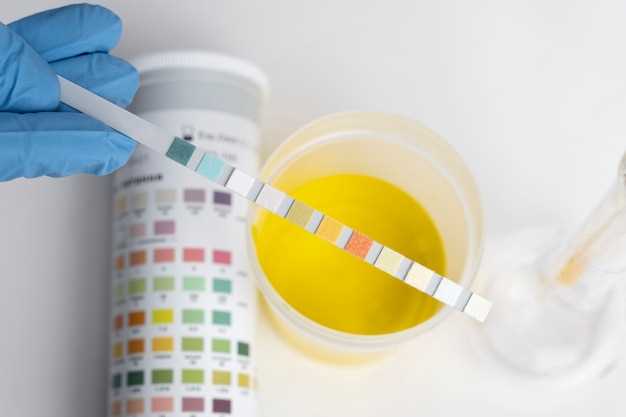
Lexapro brown urine is a common concern among individuals taking this medication. While Lexapro is known for its positive effects on mental health, some users may experience changes in urine color, including a darkening to a brown hue. It’s important to note that this side effect is typically harmless, but it’s always best to consult with your healthcare provider if you have any concerns.
If you notice changes in your urine color while taking Lexapro, keep track of your symptoms and discuss them with your doctor. They can provide guidance on whether any adjustments to your medication or lifestyle are necessary. Remember, your health and well-being are a top priority, so don’t hesitate to seek professional advice when needed.
Understanding Lexapro Side Effects

When taking Lexapro, it is important to be aware of the potential side effects that may occur. One common side effect that some individuals experience is a change in urine color. While this side effect may be alarming, it is typically harmless and should not cause concern.
The change in urine color when taking Lexapro is often due to the medication’s impact on the body’s metabolism and excretion processes. The color of urine can vary from person to person and may range from a dark yellow to brown color.
| Impact on Urine Color | Managing Side Effects |
| Lexapro can sometimes cause urine to appear darker or even brown in color. This change is usually temporary and should not be a cause for concern. | If you notice a change in urine color while taking Lexapro, it is important to stay hydrated by drinking plenty of water. This can help flush out any excess medication or byproducts that may be causing the discoloration. |
It is important to discuss any concerns about side effects with your healthcare provider. They can provide guidance on managing side effects and ensure that your treatment with Lexapro is safe and effective.
Impact of Lexapro on Urine Color
As a commonly reported side effect of Lexapro, changes in urine color can be concerning for some individuals. When taking Lexapro, it is not unusual for urine color to become darker or more concentrated. This change in urine color is typically harmless and is often due to the medication’s effect on hydration levels in the body.
It is essential to stay well-hydrated while taking Lexapro to prevent dehydration and maintain healthy urine color. Drinking plenty of water throughout the day can help dilute the urine and reduce the intensity of any color changes. Additionally, monitoring urine color can serve as a simple indicator of hydration levels, with lighter urine colors indicating good hydration.
If you notice significant changes in urine color or have concerns about the impact of Lexapro on your body, it is essential to discuss these symptoms with your healthcare provider. Your healthcare provider can provide guidance on managing side effects and adjusting your medication regimen if necessary.
Managing Lexapro Side Effects
It’s important to discuss any side effects of Lexapro with your healthcare provider to ensure your treatment plan is optimal. Your healthcare provider may be able to adjust your dosage, recommend lifestyle changes, or suggest alternative medications to help manage side effects.
Communication is key
Openly communicate any concerns or experiences with side effects to your healthcare provider. They can provide guidance and support to help you navigate your treatment journey.
Stay informed
Keep yourself informed about potential side effects of Lexapro so you can recognize and address them promptly. Understanding what to expect can help you feel more in control of your treatment.
Take action
If you experience side effects that are bothering you, don’t hesitate to reach out to your healthcare provider for advice. They may be able to suggest strategies to help manage or alleviate your symptoms.
Discussing Lexapro Side Effects with Healthcare Provider

When taking Lexapro, it is important to have open and honest discussions with your healthcare provider about any side effects you may be experiencing. Your healthcare provider is there to help you navigate your treatment and ensure that you are getting the best possible care.
Why is it important to discuss side effects?
Discussing side effects with your healthcare provider is crucial because they can provide valuable insight and guidance on how to manage them. Your healthcare provider may be able to adjust your dosage, recommend lifestyle changes, or suggest alternative medications to minimize side effects.
Remember, your healthcare provider is your partner in your treatment journey and is there to support you every step of the way.
Tips for Healthy Hydration while on Lexapro
Hydrate Regularly: Drinking an adequate amount of water throughout the day can help prevent dehydration, especially when taking Lexapro.
Monitor Your Intake: Keep track of how much water you are consuming daily to ensure you are meeting your hydration needs.
Avoid Excessive Caffeine: Limit your intake of caffeinated beverages, as they can contribute to dehydration. Opt for water or herbal teas instead.
Choose Fruits and Vegetables: Incorporate hydrating foods like watermelon, cucumbers, and strawberries into your diet to increase your water intake.
Listen to Your Body: Pay attention to signs of dehydration such as dry mouth, dark urine, or dizziness, and drink water accordingly.
Consult Your Doctor: If you have concerns about staying hydrated while taking Lexapro, speak to your healthcare provider for personalized recommendations.
